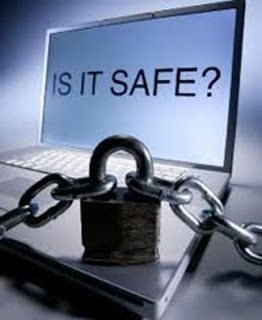Saturday, 6 April 2013
How to Hide a Drive from My Computer
Posted by
Unknown on 04:14
3 Comments
If you want to hide data from others...or if u want to hide whole data which is present in your one drive then the best way is hide that drive. :) and when u want to see that data that time unhide drive..this is very eazy way to hiding any type of data.
If you’ve got drives in My Computer that you never access, such as a USB Flash drive that you are using solely for ReadyBoost, a floppy drive, or a network drive only used for a particular piece of software, then you might want to simply hide the drive from your computer.
follow this steps to hide drive.
Press Windows key+R Type cmd and Enter.
Type as Diskpart and press enter. to start your disk session.
Input as List Volume to list out your Volume set.
Time to select the Volume which you are planning to hide,
You can do this by Select Volume 2 to select volume number 2
(replace 2 with volume of your choice).
Check for the volume numbers from list after you type list
volume, to select the desired drive (c,d,e,f) to select the respective one.
Now enter Remove Letter 2 (replace 2 with the volume number which
you selected).
Now the drive will be hided once after you restart your PC.
How to Unhide the hidden drive?
To unhide the drive back again follow these steps.
Press Windows key+R Type cmd and Enter.
Type as Diskpart and press enter.
Type as List volume and press Enter.
Select Volume 2 (replace 2 with the drive volume number you selected).
Type Assign Letter 2 and press enter.
Now restart the computer to get back your Drive on My-computer.
Thanks Alot...
plz comment..
your comment is most valuable.:)
Thanks Alot...
plz comment..
your comment is most valuable.:)
Wednesday, 3 April 2013
How to Protect Your Computer from Viruses and Hackers
Posted by
Unknown on 10:52
4 Comments

Virus:
A computer virus is a computer program that can replicate itself and spread from one computer to another. The term "virus" is also commonly, but erroneously, used to refer to other types of malware, including but not limited to adware and spyware programs that do not have a reproductive ability
Malware includes computer viruses, computer worms, ransomware, trojan horses, keyloggers, most rootkits, spyware, dishonest adware, malicious BHOs and other malicious software. The majority of active malware threats are usually trojans or worms rather than viruses. Malware such as trojan horses and worms is sometimes confused with viruses, which are technically different: a worm can exploit security vulnerabilities to spread itself automatically to other computers through networks, while a trojan horse is a program that appears harmless but hides malicious functions. Worms and trojan horses, like viruses, may harm a computer system's data or performance. Some viruses and other malware have symptoms noticeable to the computer user, but many are surreptitious or simply do nothing to call attention to themselves. Some viruses do nothing beyond reproducing themselves.How to Protect Your Computer from Viruses and Hackers???
1) Put Your Firewall On.
A firewall protects you against:
* Hackers breaking into your computer.
* Worms – types of viruses that spread from computer to computer over the internet.
2)Put Your Browser Security On.
Blocking pop-ups is not enough. You have to set your browser either to the medium or high security level. This will help your browser block registered malicious websites or scripts.
3)Install the Latest Anti-Virus.
1.There are so many free reliable anti-viruses online.
2.Google has one, which can be downloaded via Google Pack.
3.Some Anti-Virus companies offer free trial versions too, which
is good enough to protect your computer.
4.You may read some reviews and choose which is best for you.
5.On the other hand, if you think that you need higher protections,
its best to buy an Anti-Virus program.
4)Assigning Passwords is in Combination.
1.As technology is rapidly advancing
especially in communication and social networks, hackers are also
having more avenues to steal your information and files.
2.Be tricky with
your passwords. Instead of “techie” you can make it “techie#123”. Use a
combination of numeric and alpha-numeric characters. Moreover, Regarding
security questions, be smart in assigning your answer.
Comment please.....
your comment is most valuable
Subscribe to:
Comments (Atom)
Check next page


 HI..I am a owner of this website.My name is
HI..I am a owner of this website.My name is 








